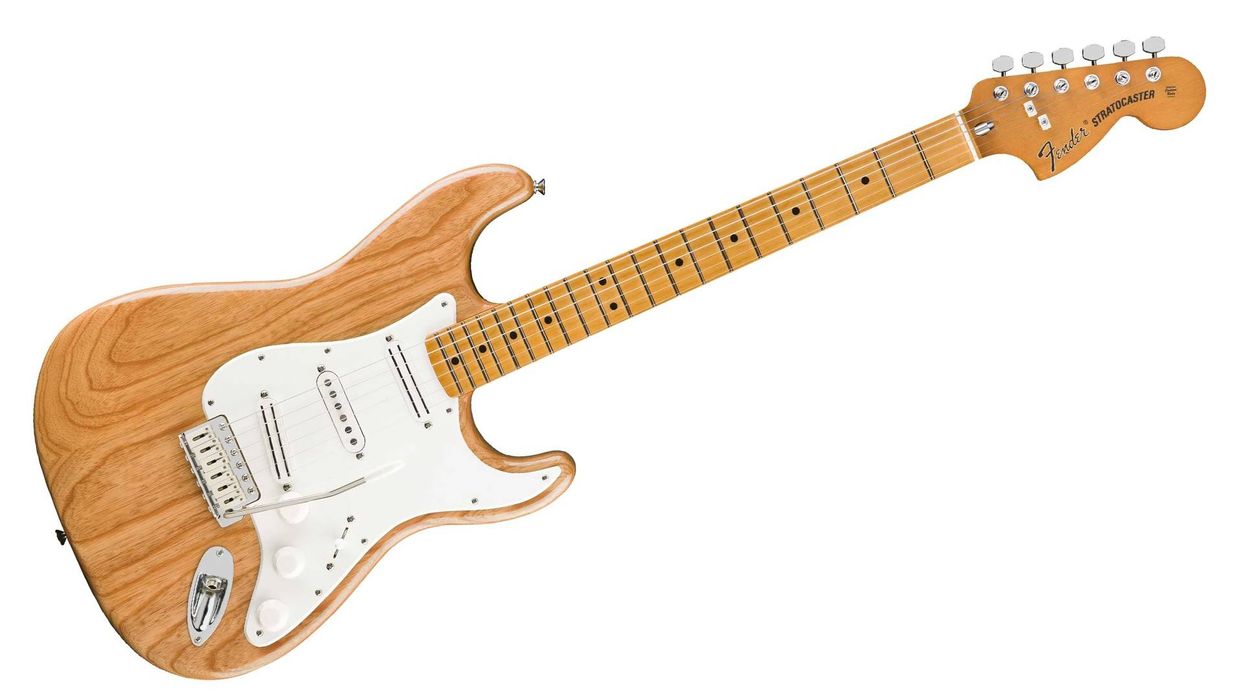Any garage rocker that’s bathed in the power of an open E chord in front of a sweetly overdriven amp can attest to the harmonic beauty that this combo can produce. Hell, with just the right amount of grit, that sound can pretty much make you feel like you rule the world. But sometimes you want to push your amp just a little bit more and that is where the never-ending realm of dirt boxes comes into play.
Since the late '60s, the brain trust at Electro-Harmonix has churned out nearly every flavor of overdrive, distortion, and fuzz imaginable. One of their latest creations, the Soul Food, is an unabashed attempt to deliver an affordable version at one of the most mythical and hyped pedals ever created, the Klon Centaur. Although the Centaur is technically discontinued, it isn't uncommon to find a used on eBay for around $2,000, which is well out of reach of most mortals. The Centaur became legend for organic, transparent, detailed overdrive tones, and you can hear Electro Harmonix’ emphasis on those qualities in the Soul Food—a pedal that can be had for the price of a pair of sneakers.
Under The Hood
Before I dug into the Soul Food, I popped open the back of the sturdy enclosure to see what made this little bugger tick. Like the Centaur, the Soul Food uses a TL072 op-amp and a dual-gang Gain control, which makes the gain and volume controls more interactive.
There’s also a switchable buffer that’s a help if you use fuzz pedals ahead of the Soul Food in you signal chain. When the buffer is switched off, the pedal functions as any standard true bypass pedal. Overall, the build quality is exactly what you would expect from Electro Harmonix—rugged, and built for real-world gigging. Meanwhile, the Soul Food’s controls mimic the minimalist set on the Centaur: gain, treble, and output.
Flattering Imitations
Much like the Centaur, the Soul Food works great as a clean boost or a down-and-dirty overdrive. Luckily, the Premier Guitar office happens to have a Klon Centaur laying around, so I had the perfect benchmark to see how close Electro Harmonix got to their mark. I grabbed my Mexican-made Stratocaster loaded with Rio Grande pickups and plugged both pedals into my Fender Deluxe Reverb reissue, which is a great canvas for overdrive pedals.
With the controls set at noon, the Soul Food gave the Deluxe a little extra punch and grit without coloring the tone at all. Compared to identical settings on the Centaur, I found the Soul Food a bit brighter, but with some slight tweaking to the Treble and Gain controls I was able to dial in a tone that would make a blind test pretty tough. Digging in coaxed a lot more dirt and color out of the Soul Food but it just took a little less pick attack to restore the Soul Food’s basic transparency.
Ratings
Pros:
Preposterously cheap. Works well with other pedals. Excellent clean-boost tones.
Cons:
A bit lacking in midrange harmonics. Treble control can be a bit shrill near the higher end of the spectrum.
Tones:
Ease of Use:
Build/Design:
Value:
Street:
$66
Electro-Harmonix Soul Food
ehx.com
The amount of available gain is very similar to the Centaur. With the Gain knob maxed out I coaxed rich, harmonic overdrive tones out of single-coils that evoked thoughts of Eric Johnson and vintage Larry Carlton. And unlike many TS-style ODs at high-gain settings, the Soul Food’s low end was defined full of presence.
The interactive nature of the dual-gang gain control is another important differentiating factor. It almost seems to work like a wet/dry mix knob. Turn it all the way down and you have an honest, albeit louder, representation of your guitar and amp. Move the Gain knob past 2 o’ clock, however, and the output becomes both saturated and full of blossoming harmonics—a perfect tone for hot hard rock lead tones.
To me, the real magic of the Soul Food is the amount of clean boost that it puts at your fingertips. With the gain all the way down, I could tweak the output and treble controls to get more volume with less breakup. To see how the Soul Food could handle slightly hotter pickups, I grabbed a Gibson 1961 SG Reissue with P-90 pickups. The Soul Food was a great match for the P-90s, and with the treble knob on the Soul Food set to tame the P-90’s more sizzling side, I got a very big and robust clean sound.
The Verdict
With the right setting, the Soul Food is the kind of tone shaping tool you can keep on all the time. It’s relatively transparent, it’s got plenty of headroom, but it will generate colorful dirty tones as well as many of the best low-to-mid gain stomps out there. Electro Harmonix has delivered a well-made and affordable alternative to drinking the Klon Kool-Aid. And with the thousands of dollars you have left over, you can turn your attention to the pursuit of other mythical beasts.
Watch the Review Demo:







![Rig Rundown: AFI [2025]](https://www.premierguitar.com/media-library/youtube.jpg?id=62064741&width=1245&height=700&quality=70&coordinates=0%2C0%2C0%2C0)












 Shop Scott's Rig
Shop Scott's Rig




![Devon Eisenbarger [Katy Perry] Rig Rundown](https://www.premierguitar.com/media-library/youtube.jpg?id=61774583&width=1245&height=700&quality=70&coordinates=0%2C0%2C0%2C0)








 Zach loves his Sovtek Mig 60 head, which he plays through a cab he built himself at a pipe-organ shop in Denver. Every glue joint is lined with thin leather for maximum air tightness, and it’s stocked with Celestion G12M Greenback speakers.
Zach loves his Sovtek Mig 60 head, which he plays through a cab he built himself at a pipe-organ shop in Denver. Every glue joint is lined with thin leather for maximum air tightness, and it’s stocked with Celestion G12M Greenback speakers.









